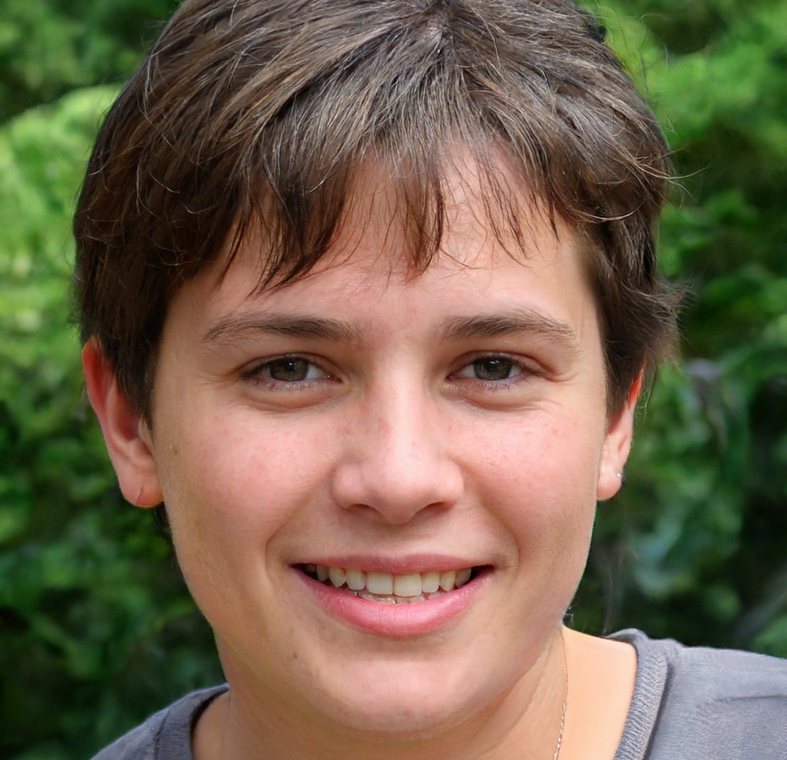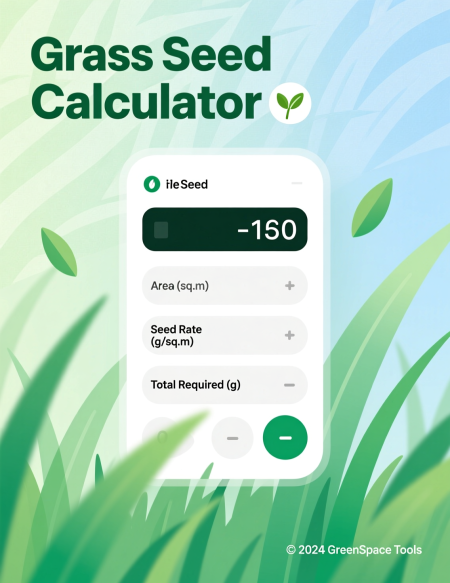Calculate Grass Seed Needs
Grass Seed Coverage Rates
📊 Coverage rates show pounds of seed needed per 1,000 square feet. New lawns require approximately twice as much seed as overseeding projects.
🌿 Cool-Season Grasses
Best for northern climates (zones 3-7)
- Kentucky Bluegrass: 4 lbs (new) / 2 lbs (overseed)
- Tall Fescue: 10 lbs (new) / 5 lbs (overseed)
- Fine Fescue: 5 lbs (new) / 2.5 lbs (overseed)
- Creeping Red Fescue: 5 lbs (new) / 2.5 lbs (overseed)
- Perennial Ryegrass: 10 lbs (new) / 5 lbs (overseed)
- Sun & Shade Mix: 6 lbs (new) / 3 lbs (overseed)
☀️ Warm-Season Grasses
Best for southern climates (zones 7-11)
- Bermuda Grass: 2 lbs (new) / 1 lb (overseed)
- Buffalo Grass: 3 lbs (new) / 1.5 lbs (overseed)
- Centipede Grass: 0.5 lbs (new) / 0.3 lbs (overseed)
- St. Augustine: 2 lbs (new) / 1 lb (overseed)
- Zoysia Grass: 2 lbs (new) / 1 lb (overseed)
- Bahia Grass: 10 lbs (new) / 5 lbs (overseed)
📦 Seed Bag Sizes
Common packaging:
- 3 lb bag: Covers 750-1,500 sq ft (overseed)
- 7 lb bag: Covers 1,750-3,500 sq ft (overseed)
- 10 lb bag: Covers 2,500-5,000 sq ft (overseed)
- 20 lb bag: Covers 5,000-10,000 sq ft (overseed)
- 50 lb bag: Covers 12,500-25,000 sq ft (overseed)
Note: Coverage varies by grass type
💰 Cost Estimates
Average prices per pound:
- Kentucky Bluegrass: $3-5/lb
- Tall Fescue: $2-4/lb
- Perennial Rye: $2-3/lb
- Bermuda: $4-6/lb
- Zoysia: $8-12/lb
- Premium Mixes: $4-8/lb
Example: 5,000 sq ft overseed with Tall Fescue = 25 lbs = $50-100
Complete Grass Seeding Guide
🌱 When to Plant Grass Seed
Cool-Season Grasses:
- Best time: Late summer/early fall (Aug-Sept)
- Second best: Early spring (Mar-Apr)
- Avoid: Hot summer months
- Reason: Cooler temps, less weed competition
Warm-Season Grasses:
- Best time: Late spring/early summer (May-June)
- Avoid: Fall and winter
- Reason: Need warm soil (65-70°F+)
🎯 New Lawn vs Overseeding
New Lawn (from bare soil):
- Requires 2x more seed
- Soil preparation essential
- Full coverage needed
- Takes 3-4 weeks to establish
- More expensive but complete control
Overseeding (existing lawn):
- Uses half the seed amount
- Fills in bare spots
- Improves density
- Cost-effective maintenance
- Annual or bi-annual practice
🏡 Soil Preparation
For new lawns:
- 1. Remove debris: Rocks, weeds, old grass
- 2. Till soil: 4-6 inches deep
- 3. Test pH: Adjust to 6.0-7.0
- 4. Add amendments: Compost, fertilizer
- 5. Level & grade: Smooth surface
- 6. Firm soil: Light rolling
For overseeding:
- Mow grass short (1-2 inches)
- Dethatch if needed
- Core aerate for best results
- Rake to loosen soil surface
🚜 Seeding Methods
Broadcast Spreader:
- Best for large areas
- Even distribution
- Walk in overlapping passes
- Apply half rate in 2 directions
Drop Spreader:
- More precise
- No overlap waste
- Good for smaller areas
Hand Seeding:
- Small areas/spot repair
- Cast by hand evenly
- Less uniform but works
💧 Watering Schedule
Critical for germination!
- Week 1-2: Water 2-3× daily, keep soil moist
- Week 3-4: Once daily, deeper watering
- Week 5-8: Every other day
- Established: 1-1.5 inches per week
- Key: Never let soil dry out during germination
- Best time: Early morning watering
📅 Timeline to Germination
Days to sprout:
- Perennial Ryegrass: 5-10 days (fastest)
- Tall Fescue: 7-14 days
- Fine Fescue: 7-14 days
- Kentucky Bluegrass: 14-30 days (slowest)
- Bermuda: 7-21 days
- Zoysia: 14-21 days
Full establishment: 8-12 weeks
🚫 Common Mistakes
Avoid these errors:
- Too much seed: Overcrowding, weak grass
- Too little seed: Thin, patchy lawn
- Wrong season: Poor germination
- Inconsistent watering: Failure to establish
- Mowing too soon: Wait until 3-4 inches
- No fertilizer: Slow growth
- Walking on new grass: Damages seedlings
💡 Pro Tips
Expert advice:
- Buy certified seed (higher quality)
- Check germination % on bag (aim for 85%+)
- Mix seed with starter fertilizer
- Cover seed lightly with straw/mulch
- Add 10% extra seed for waste
- Keep off lawn until 3″ tall
- First mowing: Sharp blade, dry grass
- Consider slit-seeding for overseeding
Here’s the complete usage guide for the Grass Seed Calculator, covering step‑by‑step use, measurement methods, coverage rates, seeding best practices, and troubleshooting.
What it does
This tool calculates the exact amount of grass seed needed for your lawn based on grass type, project type (new lawn vs overseeding), and lawn area, then suggests bag sizes, costs, and seeding guidance. It supports 12 common cool‑ and warm‑season grasses with typical coverage rates per 1,000 sq ft.
How to use
- Select grass type and project type
- Choose from Kentucky Bluegrass, Tall Fescue, Fine/Creeping Red Fescue, Perennial Ryegrass, Sun & Shade mix, Bermuda, Buffalo, Centipede, St. Augustine, Zoysia, Bahia. The tool auto‑loads the correct coverage rate for new lawn vs overseed.
- Enter lawn area
- Input total square feet to be seeded; for mixed lawns, sum sections into a single total.
- Review coverage rate
- The calculator auto‑fills pounds per 1,000 sq ft based on your selections and keeps it visible while you calculate.
- Calculate
- The tool outputs total pounds and kilograms needed, coverage used, and your area. It also recommends practical bag combinations and provides an estimated cost range and 5–10% overage for waste.
- Save or adjust
- Adjust area or project type (new vs overseed) to compare requirements before buying seed.
Measuring your lawn
- Rectangle/square
- Area = length × width (ft × ft).
- Circle/oval
- Area = π × radius² (radius = diameter ÷ 2).
- Triangle
- Area = ½ × base × height.
- Irregular lawns
- Break into simple rectangles/circles, measure each, then add all sections; exclude patios, paths, beds.
Tips:
- Use a measuring wheel for larger lawns; a long tape measure for smaller spaces.
- For quick checks, use satellite tools with ruler overlays to confirm estimates.
- Measure twice; add 5–10% extra for overlap and waste; add 10–15% for steep slopes.
Coverage rates reference
- Cool‑season grasses (typical rates per 1,000 sq ft)
- Kentucky Bluegrass: new 4 lbs, overseed 2 lbs.
- Tall Fescue: new 10 lbs, overseed 5 lbs.
- Fine/Creeping Red Fescue: new 5 lbs, overseed 2.5 lbs.
- Perennial Ryegrass: new 10 lbs, overseed 5 lbs.
- Sun & Shade mix: new 6 lbs, overseed 3 lbs.
- Warm‑season grasses (typical rates per 1,000 sq ft)
- Bermuda: new 2 lbs, overseed 1 lb.
- Buffalo: new 3 lbs, overseed 1.5 lbs.
- Centipede: new 0.5 lb, overseed 0.3 lb.
- St. Augustine: new 2 lbs, overseed 1 lb.
- Zoysia: new 2 lbs, overseed 1 lb.
- Bahia: new 10 lbs, overseed 5 lbs.
Note:
- New lawns require roughly double the seed of overseeding since bare soil needs full coverage.
- Always check your seed bag’s specified coverage; if it differs, override with that value.
Bag planning and cost
- Typical bag sizes: 3, 7, 10, 20, 50 lb.
- The calculator suggests a combination to keep waste under ~20%, plus 5–10% overage for application losses.
- Approximate costs per lb vary by type (examples):
- Tall Fescue: $2–4/lb; Kentucky Bluegrass: $3–5/lb; Bermuda: $4–6/lb; Zoysia: $8–12/lb; premium mixes: $4–8/lb.
Example:
- 5,000 sq ft overseeding Tall Fescue at 5 lbs/1,000 = 25 lbs seed; buy 1 × 20 lb + 1 × 10 lb bag (30 lbs total) or 3 × 10 lb bags; cost roughly $50–100 depending on brand.
When to seed
- Cool‑season (zones 3–7)
- Best: late summer to early fall (Aug–Sept) for warm soil/cool air; second best: early spring (Mar–Apr).
- Warm‑season (zones 7–11)
- Best: late spring to early summer (May–June) when soil reaches 65–70°F+.
Soil preparation
- New lawns
- Remove debris/weeds, till 4–6″, test pH (target 6.0–7.0), incorporate compost and starter fertilizer, level and lightly firm soil.
- Overseeding
- Mow to 1–2″, dethatch if needed, core‑aerate for better seed‑to‑soil contact, rake to expose soil and remove debris.
Seeding techniques
- Broadcast spreader
- Optimal for larger areas; apply half the rate in one direction and half at 90° for even coverage.
- Drop spreader
- More precise edges; prevent overlap into beds/hardscape.
- Hand seeding
- For small patches or spot repairs; blend seed with sand for more uniform hand casting.
Light cover:
- Topdress with a thin layer (⅛–¼”) of compost or peat to protect seed and retain moisture; straw mulch is useful on slopes (avoid heavy cover that blocks light).
Watering schedule
- Weeks 1–2
- Keep top ½” moist at all times; water 2–3× daily with light sessions to avoid runoff.
- Weeks 3–4
- Water once daily but deeper to encourage root growth.
- Weeks 5–8
- Water every other day; transition to 1–1.5″ total per week.
- Established
- Deep, infrequent watering (1–1.5″ weekly, including rainfall).
Germination timelines
- Fast: Perennial Ryegrass 5–10 days.
- Moderate: Tall/Fine/Creeping Red Fescue 7–14 days.
- Slow: Kentucky Bluegrass 14–30 days; Zoysia 14–21; Bermuda 7–21; Buffalo/Centipede 14–21.
- Full establishment typically 8–12 weeks; first mow at 3–4″ (sharp blade, grass dry).
Calibration and application tips
- Spreader calibration
- Test on a small known area using the bag’s chart and weigh remaining seed to refine gate settings.
- Avoid over/under seeding
- Over seeding density causes weak, spindly grass and disease; under seeding yields thin, patchy stands.
- Edge control
- Use a drop spreader or border pass at reduced rate around edges to prevent seed in beds/hardscape.
Common mistakes to avoid
- Wrong season or cold soil leading to poor germination.
- Inconsistent watering causing patchy germination/failure.
- Heavy foot traffic during establishment; postpone until after first mowing.
- Skipping starter fertilizer (especially for new lawns).
- Ignoring that new lawns need double the seed compared to overseeding.
Troubleshooting
- Patchy germination
- Re‑rake lightly, re‑apply a thin layer of seed, topdress lightly, and correct watering frequency.
- Moss/poor vigor
- Likely low pH/compaction/shade; test pH, apply lime if acidic, improve drainage, thin trees to improve light, aerate compacted soil.
- Weeds post‑seeding
- Avoid most herbicides until after 2–3 mowings; hand pull; mow to prevent weed seeding; consider pre‑emergent in future timing (not during seeding).
Regional pairing (quick guide)
- Northern/cool climates (zones 3–7)
- Kentucky Bluegrass, Perennial/Tall/Fine Fescue, Sun & Shade mixes.
- Transition/variable climates (zones 6–8)
- Tall Fescue blends, Sun & Shade mixes, Perennial Rye overseeding.
- Southern/warm climates (zones 7–11)
- Bermuda, Zoysia, Centipede, Bahia, St. Augustine.
Maintenance after seeding
- Fertilizer
- Starter fertilizer at seeding (balanced with phosphorus if allowed by local regs), then a light follow‑up feeding 4–6 weeks later.
- Mowing
- First mow at 3–4″; remove no more than one‑third of blade height; keep blades sharp to avoid tearing seedlings.
- Traffic
- Keep pets/people off seeded areas; use boards to distribute weight if access is unavoidable.
Bag selection checklist
- Use certified seed with high germination (85%+) and low inert/weed content.
- Choose mixtures suited to your sun/shade, traffic, and irrigation levels.
- Prefer bags with clear coverage charts for new vs overseeding rates.
- Plan for 5–10% extra; buy practical combinations that minimize leftover waste.
This guide ensures accurate quantity planning, proper timing, correct soil preparation, precise application, and successful establishment for both new lawns and overseeding projects.

Angelina Everly leads the editorial desk at Live Green Gardens, blending practical plant care, hands-on product testing, and approachable outdoor styling. She focuses on step-by-step how-tos, buyer’s guides, and small-space makeovers that work in real life and real budgets. When she’s not comparing pruning shears or setting up a drip kit, you’ll find her creating cozy corners with planters, solar lights, and pollinator-friendly picks—always with clear pros/cons and safety notes so you can buy once and garden happy.

